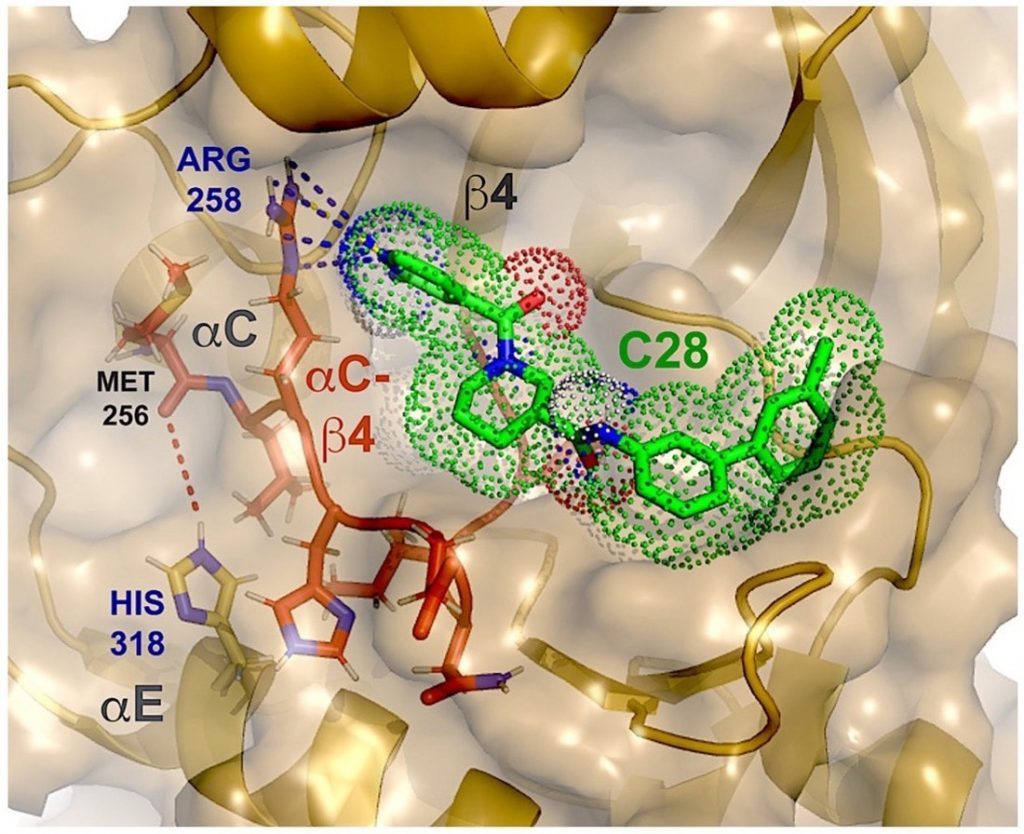‘Molecular chewing gum’ could free patients from rare bone malady

Professor Jay Groppe could talk about his hard-earned research patent, but the true glory, he’ll tell you, would be leaving a legacy of healing and hope for those who suffer.
As he furthers his work in protein structure and function, Groppe is striving for a second-generation version of his patent. He’s been working toward real-life applications for small-molecule inhibitors of extraskeletal bone, which grows abnormally in non-skeletal tissues. One such malady is fibrodysplasia ossificans progressiva, or FOP, a genetic disorder that turns soft tissues into bone, forming a second immobilizing skeleton. FOP often first presents itself when brought on by trauma during childhood.
“Some of these poor parents, their child falls on the playground or they go in for dental work, get an intramuscular injection or something like that, and then poof,” says Groppe, associate professor in biomedical sciences and 2016 Teacher of the Year.
Since beginning his FOP efforts, the faces and the misfortune of those struggling have never been far from Groppe’s mind.
“I’ve met many of these FOP patients and it’s difficult to be even a casual observer,” says Groppe of the disorder, which affects 1 in 2 million children. “It’s extremely rare, but it’s also horrific.”
FOP patients face a life of ever-decreasing joint mobility that progressively restricts their ability to perform simple daily tasks. Soft tissue that turns into bone in the jaw makes dental work ill-advised, and treatment by dentists or physicians who are not aware of the patient’s condition can unknowingly cause debilitating harm. Individuals with FOP often do not survive past their 40s due to thoracic insufficiency leading to suffocation, Groppe says.
For decades, the FOP community has rallied to make inroads into the cause behind their affliction so that others one day won’t succumb to the same fate.
FOP sufferers Harry Eastlack and Carol Orzel chose to donate their bodies to science for others to study and learn. Their skeletons are on display in the Mutter Museum of the College of Physicians in Philadelphia. Jeannie Peeper, who also suffers from FOP, founded the International Fibrodysplasia Ossificans Progressiva Association in 1988 to connect with other FOP patients. Since then, more than 500 FOP sufferers around the world have pooled their knowledge and efforts so future generations won’t suffer as they did. Peeper organized the first FOP gathering, which was not only a long-needed get-together for moral support but also a boon to research. With them all together for the first time, Fred Kaplan with the Perelman School of Medicine at the University of Pennsylvania—and an elected member of the National Academy of Medicine—was able to draw blood samples to further his research.
In 2006, after nearly two decades, Kaplan and research colleagues at the UPenn FOP Center in Philadelphia identified the so-called skeleton key gene, or FOP gene. Immediately thereafter, he then selected Groppe to determine the effects of FOP mutations on the protein.
Over the next seven years, Groppe conducted translational studies, and in 2013 began his drug development campaign.
Groppe’s translational research stemming from Kaplan’s FOP gene discovery revealed that the mutant protein was more flexible than normal proteins. By sticking “molecular chewing gum into a small pocket on the protein,” he thought he could decrease the flexibility to be more on par with the wild-type protein. Instead, he destabilized both.
“I stumbled onto this cutting-edge approach. I’d like to think it was through tremendous insight, but it was actually just serendipity,” he says. “But that’s how science often works. You’ve got to do the footwork.”
The exact spot he targeted was a key hub, unbeknownst to Groppe, that researchers had tried and failed to target to diminish or inhibit the activity of related proteins.
“This has tremendous advantages from a therapeutic standpoint, because then the cell is required to replace the protein, which is a time-consuming cellular process,” he says.
In his recent editor-solicited review article, “Induced Degradation of Protein Kinases by Bifunctional Small Molecules: a Next-Generation Strategy,” Groppe says this is expected to be a major new avenue for pharmaceuticals.
A leading company, Arvinas, has already advanced two compounds into clinical trials. One is targeting the androgen receptor for an aggressive form of prostate cancer. Along similar lines, another targets the degradation of estrogen receptors, which has potential for metastatic breast cancer.
“These examples are just the tip of the iceberg, because there are so many targets of current anti-cancer drugs that are not efficacious,” he says.

